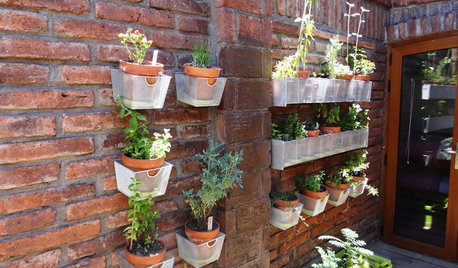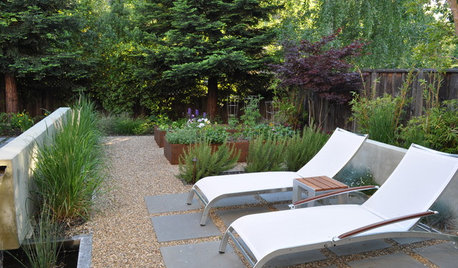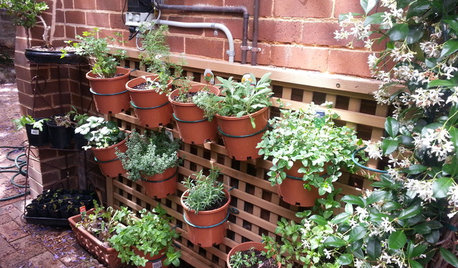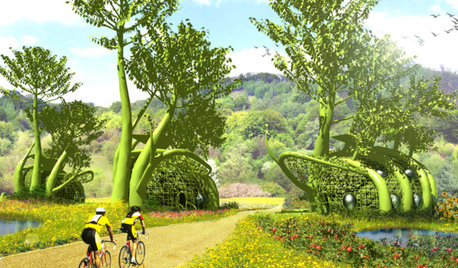Hydroponic Tomato
frank1es
10 years ago
Related Stories

FARM YOUR YARD6 Things to Know Before You Start Growing Your Own Food
It takes time and practice, but growing edibles in the suburbs or city is possible with smart prep and patience
Full Story
EDIBLE GARDENSHouzz Call: Where Are the Craziest Places You Grow Edibles?
Basil in a bathtub, spinach stacked up a wall ... If your edibles occupy an odd spot, we’d like to know
Full Story
URBAN GARDENSHarvest the Bounty of a Patio Garden
Make the most of small spaces on decks and balconies to enjoy your pick of vegetables, fruits and herbs
Full Story
FARM YOUR YARDHow to Grow Vegetables in Containers
Get glorious vegetables and fruits on your patio with a pro’s guidance — including his personal recipe for potting mix
Full Story
FARM YOUR YARD14 Crazy Places to Grow Edibles
Some Houzzers may lack ground for gardening, but they’re never short on imagination
Full Story
SUMMER GARDENINGHow to Grow Basil
Bright color, quick growth and endless uses for cooking make this summer annual a winner in the garden or a pot
Full Story
GARDENING GUIDESWhat Are Your Spring Gardening Plans?
Tearing out the lawn? Planting edibles? Starting from scratch? Tell us what you plan to change in your garden this year
Full Story
GARDENING GUIDESLush, Foodie Abundance in a Small Urban Garden
This modest backyard garden provides its owner with fruit and vegetables all year round, thanks to an innovative low-maintenance approach
Full Story
EVENTSOn Show: Weird, Wondrous Science Meets Design
Houses grown, not built. Power-generating soil. And snail poop that ... well, see for yourself in our coverage of a new Rotterdam exhibit
Full Story
FARM YOUR YARD9 Ways to Change Up Your Vegetable Garden for the Coming Season
Try something new for edible plantings that are more productive than ever
Full StoryMore Discussions







Ricone
frank1esOriginal Author
Related Professionals
Barrington Hills Landscape Architects & Landscape Designers · Redondo Beach Landscape Architects & Landscape Designers · Berkeley Heights Landscape Contractors · Huntley Landscape Contractors · Hurricane Landscape Contractors · Long Beach Landscape Contractors · Painesville Landscape Contractors · Red Oak Landscape Contractors · Santa Maria Landscape Contractors · Tehachapi Landscape Contractors · Tinton Falls Landscape Contractors · Vineyard Landscape Contractors · West Covina Landscape Contractors · New Carrollton Landscape Contractors · Greenfield Landscape ContractorsRicone
grizzman
nu2hydro
deaddoc
cole_robbie
deaddoc
Ricone
frank1esOriginal Author
grizzman